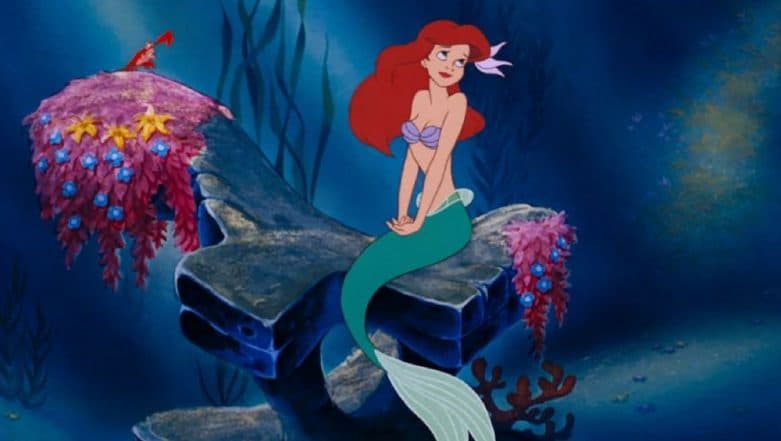International Children's Book Day: 6 Fairy Tales That Are Bad For Our Children
Apart from being too gory for sensitive minds, fairy tales also spread racism, propagate toxic ideas of love and create body image issues in children.

Remember retiring to a quiet corner of your house with a book of fairy tales in hand? It’s one of the fondest memories we have had as a child, reading stories like Cinderella, Snow White and the Seven Dwarves and Peter Pan. Most of these tales have given us major life lessons and shaped our ideals of love, friendship and ethics. They have taught us the virtue of sacrifice in The Little Mermaid, true love in The Sleeping Beauty and the dangers of trusting sweet-talking strangers in The Little Red Riding Hood. We remember the sweet take home messages and morals in each of those tales, but we tend to ignore all the blood, guts and archaic values that were normalised through them. As innocuous as these stories may seem now that we are past that age, we can’t deny that some of those fairy tales were inappropriate for young children. On International Children’s Book Day, we list six fairy tales you should never read out to your children.
The Little Mermaid

Hans Christian Anderson’s classic The Little Mermaid can best be described as a sweet love story with a heart-wrenching climax. A mermaid who falls in love with a human prince trades her mellifluous voice for a pair of legs so that she can become human like the prince. Later, she realises that the prince is in love with someone else. If she has to go back to her own people under the sea as a mermaid, she’ll have to kill the prince. But she decides against it and sacrifices herself so that the prince can live. You don’t have to read between the lines to know that the story endorses suicide. Worse, it teaches children to put their self-interests last and to sacrifice everything for love, even if they don’t get anything in return.
Cinderella
We all love a good, satisfying story where the underdog triumphs against all odds. That’s why we love Cinderella, where the underdog in question is the titular character, doomed to spend her days sweeping chimneys while her ugly stepsisters and stepmother bully and torture her. Poetic justice prevails in the end when the prince seeks Cinderella out and marries her, much to the chagrin of her homely stepsisters. It makes for a gratifying story, but it can subtly sow seeds of lookism in your child’s mind. Right from the start, the story places a lot of stress on ugliness of the stepsisters who ill-treated Cinderella because the two were jealous of her good looks. It perpetuated the importance of physical beauty; there is no other insight we have into Cinderella’s character apart from her attractiveness, which helps her clinch the prince for herself, not her wit or kindness. Considering we are already fighting body-shaming and the works, Cinderella sends out the wrong message to our little girls.
The Little Red Riding Hood
There isn’t a better way to teach your children about ‘Stranger Danger’ than the story of Little Red Riding Hood, where an innocent girl on her way to her grandma’s house is waylaid by an evil wolf. But it also happens to one of the goriest fairy tales, the likes of which can be disturbing for your little one. There are scenes of graphic violence where the wolf eats Red and her grandma whole. And in the end, there’s a cameo by an axe-wielding woodcutter who hacks open the wolf’s stomach to free the two. A tad too scary and gory for young minds.
Hansel and Gretel
Another scary tale is that of Hansel and Gretel, a brother-sister duo who are kept captive by an evil witch in a gingerbread house. The story details the ordeals of the siblings who find themselves in a scary forest, only to be lured into a trap by the witch. There are blatant references to cannibalism and witchcraft, which may not be appropriate for children. In the end, the children escape by shoving the witch into a pot of oil. The amount of gore in the story make violent video games appear tamer in comparison.
Snow White and the Seven Dwarves
The tale of Snow White and the Seven Dwarves are wrong for all the right reasons. Like Cinderella, the story of Snow White also promotes lookism. The story praises the beauty of fair Snow White whose skin was white as snow, her cheeks were rosy as blood and her hair was black as ebony. The last time we checked, India was still battling its fair-skin obsession and colourism. Do we want our children to also grow up internalising such Euro-centric standards of beauty? That apart, the story also contains details of graphic violence and murder, including a part where the evil queen wants the huntsman to rip out Snow White’s heart.
Sleeping Beauty
In the wake of the #Metoo campaign, recently, there was a call for removing Sleeping Beauty from the school curriculum of a school in Britian. The proposal was pioneered by a UK woman Sarah Hall who didn’t want children as young as her six-year-old son to internalise the problematic message of Sleeping Beauty. In the story, a cursed princess is doomed to spend the rest of her life in slumber and can be revived only by her true love’s kiss. Firstly, the story paints a rather unrealistic picture by perpetuating notions like true love. Secondly, it shows things like love are preordained by fate and individuals have no freedom in selecting their own life partners. Thirdly, women are presented as damsels in distress with no power of agency. And lastly, it sends out the wrong message of consent when the prince kisses the princess and revives her out of slumber.
(The above story first appeared on LatestLY on Apr 02, 2018 05:24 PM IST. For more news and updates on politics, world, sports, entertainment and lifestyle, log on to our website latestly.com).



